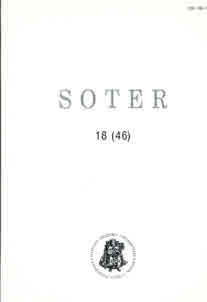Antano Maceinos-Jasmanto religinė poezija
The religious poetry of Antanas Maceina
Author(s): Viktorija SkrupskelytėSubject(s): Christian Theology and Religion
Published by: Vytauto Didžiojo Universitetas
Keywords: būtis; nebūtis; būtybė; transcendencija; kenozė; being; non–being; created being; the transcendent; kenosis;
Summary/Abstract: A major twentieth century Lithuanian philosopher, Antanas Maceina was also a poet and during his lifetime published three volumes of verse under the pen–name of Antanas Jasmantas. Most critics regard Maceina‘s poetry as separate from his philosophical inquiry. Maceina, however, argued that poetry and philosophy are closely related: both originate in verbal activity and both bear deep traces of their creator‘s conception of man and the universe. This calls for a re–examination of Maceina‘s poetry and poetics. Maceina defined poetry in Heidegger‘s terms and drew close paralells between poetry and the philosophy of being and non–being. To the degree that, in Maceina‘s philosophy, being is ultimately defined as the Transcendent, his notion of poetry embraces both the metaphysical and the religious. It is difficult to say whether all of Maceina‘s poems were conceived with religious themes in mind. At least two of his collected volumes, however, are organized along lines that reveal the author‘s intention to direct attention to man‘s relationship to God as his Creator and the source of all being. Jasmantas sees man as moving between being and non–being, as a traveller both attached to his world and standing in a personal I–Thou relationship to God. Many of his best poems delve into the mystery of the Incarnate God and reiterate his philosophical view of the transcendent as taking the form of man in kenosis. But Maceina‘s poetry does not entirely locate the supernatural within the natural world. The divide between the two persists, as it persists in his philosophical inquiries, and it seeks subtle and original forms of expression that bypass the highlands of the beautiful prevalent in lyric poetry as well as the cosmic and mystic visions familiar to pre–modern religious poetry.
Journal: SOTER: religijos mokslo žurnalas
- Issue Year: 47/2006
- Issue No: 19
- Page Range: 177-204
- Page Count: 28
- Language: Lithuanian

